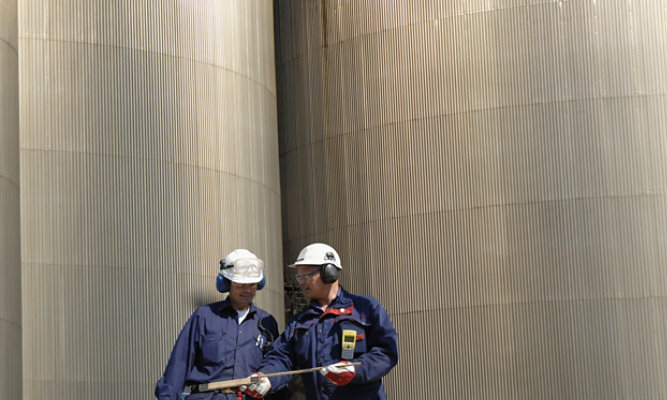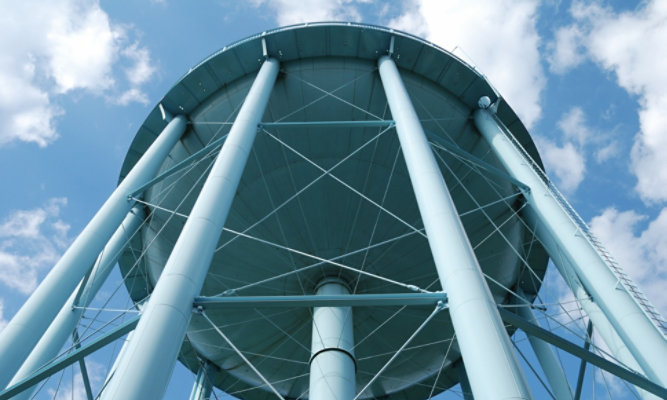Water Tank and Water Reservoir Liners: A Complete Guide
When it comes to storing water—whether for municipal, agricultural or industrial use—durability matters. Water tanks and reservoirs are constantly exposed to moisture, chemicals and physical wear, which can lead to corrosion, leaks and costly structural damage over time. That’s where liners come in. These protective barriers are designed to shield storage systems from harsh conditions, ensuring long-term performance and peace of mind. In this guide, we’ll break down everything you need to know about water tank and reservoir liners—from how they work to the best systems for the job.

What Are Water Tank Liners?
Water tank liners are protective barriers installed inside water storage tanks and reservoirs to prevent leaks, corrosion, and contamination. Acting as a shield between the stored water and the tank’s interior surface, these liners help maintain structural integrity while ensuring the stored water remains clean and safe.
Whether used in above-ground or underground tanks, liners come in a variety of materials—such as flexible membranes, epoxy coatings or polyurethane systems—each designed to meet specific performance and regulatory needs. From industrial applications to potable water storage, water tank liners play a critical role in prolonging the life of the tank and reducing maintenance costs over time.
Why Are Water Tank Liners Important?
Industrial, commercial and municipal water tanks and reservoir systems undergo constant abuse from wear and tear, impacts and abrasions as well as exposure to chemicals, moisture and other destructive elements. This harsh environment can quickly degrade and corrode concrete or steel and cause concrete cracking
leading to costly damage—unless the reservoir foundation, pipes, tanks and other components are covered in a protective coating solution specially designed for water reservoirs. Water tank and water reservoir lining solutions offer superior resistance to impacts, abrasions, corrosion and moisture, supporting the long-term service life of reservoir infrastructure.



The Benefits of Water Tank and Water Reservoir Liners
Water tank and reservoir liners provide more than just a protective layer—they help extend the lifespan, improve safety and reduce long-term maintenance costs of your water storage systems. Here are some of the top benefits:
Corrosion Protection
Water and environmental factors can cause metal and concrete tanks to corrode over time. Liners act as a protective barrier that prevents corrosion and oxidation, preserving the structural integrity of the tank and minimizing costly repairs.
Leak Prevention
Cracks, seams or aging materials in a tank can lead to water loss. Liners create a seamless, watertight layer that stops leaks and helps maintain consistent water levels, which is especially important for municipal and industrial operations.
Chemical and UV Resistance
In environments exposed to harsh chemicals or UV radiation, specialized liners can resist chemical attacks and sun damage. This is critical for tanks storing treated or processed water, ensuring the liner holds up under challenging conditions.
Easier Maintenance and Cleaning
Smooth, non-porous liner surfaces help prevent microbial growth and scale buildup, making routine maintenance and cleaning faster and more efficient. This results in improved sanitation and reduced downtime.
Extended Service Life
By shielding tanks from wear and tear, water tank liners significantly extend the service life of the storage system. This reduces the need for premature replacements and protects your investment for the long haul.

Water tank and water reservoir lining solutions provide exceptional resistance to impacts, abrasions, corrosion, and moisture, ensuring the long-term durability of reservoir infrastructure.
Types of Water Tank and Water Reservoir Linings
Water storage tanks come in a variety of materials, including steel, and concrete, each requiring specialized coatings and linings to ensure durability and compliance with potable water safety standards.
Steel Water Tank Lining Requirements
Steel water tanks are highly susceptible to corrosion, making anti-corrosive epoxy and polyurethane coatings essential for long-term protection.
Concrete Tank Lining Requirements
Concrete potable water tanks, while structurally robust, can suffer from cracking and porosity. Often flexible linings are applied to create an impermeable barrier against water infiltration and contamination.
The Solution: Sherwin-Williams Water Tank Linings and Coatings
At Sherwin-Williams, we offer a range of NSF/ANSI 61-approved coatings and linings tailored to these diverse water tank materials, ensuring optimal performance in demanding water storage environments. Our solutions not only extend the service life of water tanks but also safeguard against leaks, microbial growth, corrosion and chemical damage.
With fast-curing, easy-to-apply formulations, our water tank coatings and linings provide a seamless, long-lasting finish that supports clean and safe water storage.
Shop High-Quality Water Tank and Reservoir Coatings and Linings at Sherwin-Williams
Water reservoir infrastructure requires low maintenance, long-lasting coating and lining solutions that are impermeable, durable, resistant to chemicals and anti-corrosive. For the best water reservoir liners and coatings, turn to Sherwin-Williams. Our water storage and reservoir coating and lining systems are available in a variety of formulations and are specially designed to meet the unique needs of water reservoir facilities.
To learn more about our water reservoir coating and lining solutions, contact a Sherwin-Williams representative today.
Articles
Industry Expertise and Innovation
Read about water and wastewater coatings and linings, learn which products are better for various applications, and how we can assist you from spec to protect.
See AllWater & Wastewater Coatings
Explore our industry solutions and technology to help protect your assets.
Learn MoreLocal Support
Get localized support from a dedicated Asset Protection Manager for Water Infrastructure.
Search by State

